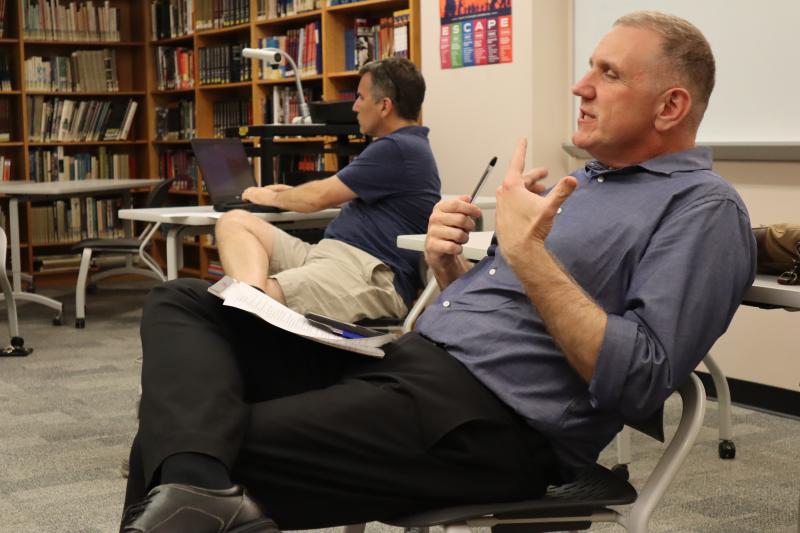T.U.R.F. plans next steps for ORR restoration projects
MATTAPOISETT — In their second meeting since losing the Rochester special election in July, members of Tri-town Unified Recreational Facilities regrouped to plan new ways to achieve their goals of bringing a new track, turf field, and auditorium lights to Old Rochester Regional High School on Tuesday, Aug. 6.
With athletic fields that haven’t been renovated since 2000, a cracked rubber track, and lights reaching dangerously hot temperatures, T.U.R.F president Tom Flynn reminded members that “the problems are now, so we have to come up with solutions that have a practical timeline.
For Flynn and other T.U.R.F. members, one practical solution was to break down the group’s effort into three subcommittees for the field, track, and lights respectively..
“Smaller bites are easier to swallow,” said Andrew Daniel of Marion. Daniel said that he sees value in the proposed renovation projects, but voted against the original plan because he did not want to invest the additional tax money, without being assured that proper maintenance would be done going forward.
The three committees will be tasked with finding the best way to fund, and gain support for each individual renovation project. While still in the preliminary stages, T.U.R.F members have already discussed potential sources of funding from both public and private sources.
T.U.R.F. member Tina Rood said that she has considered applying for a Mass Save grant specifically for performance lighting. Other members proposed reaching out to alumni and community groups in the tri-town area to raise funds for restoring the athletic facilities.
Members also discussed presenting their renovation projects to the Capital Planning Committees in each of the three towns, whether on three separate occasions, or preferably in one combined meeting. The committees could then handle the projects individually, meaning that a “no” vote on one project wouldn’t take away from a “yes” vote on another.
Rood said that approval from the Capital Planning Committees may also negate the need for a special election that ultimately became the downfall of the original plan. The combined restoration plan would have raised taxes over the proposition 2-1/2 limit, which restricts tax rates increases to 2.5 percent. As such, the project needed to be approved by the school committee, as well as town meetings, and special elections in all three towns. The project passed six of the seven steps in the approval process, before being voted against in Rochester.
The next T.U.R.F. meeting has been scheduled for Monday, Aug. 26.














